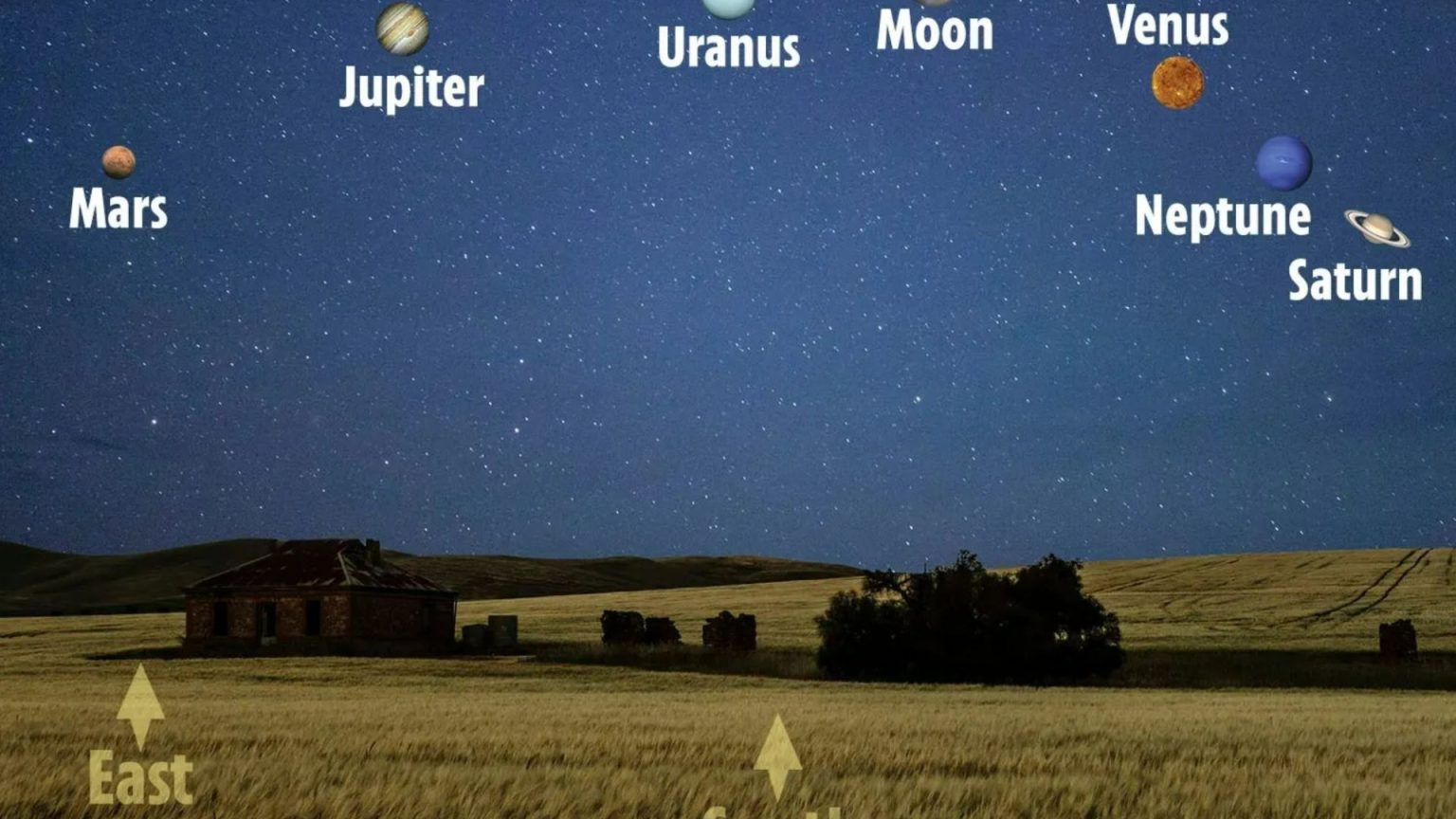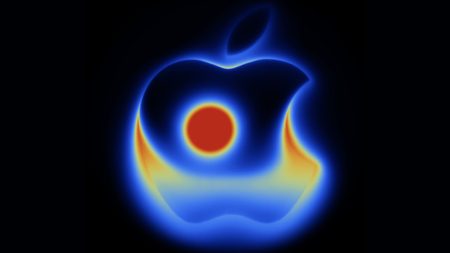A rare celestial event, a “planet parade,” is set to grace the night sky, showcasing an alignment of six planets: Mars, Jupiter, Uranus, Neptune, Saturn, and Venus. This alignment occurs as the planets, following their individual orbits, occasionally converge within a relatively small section of the sky, creating a visually stunning arc. While all six planets are involved in this alignment, only four – Mars, Jupiter, Saturn, and Venus – will be readily visible to the naked eye. Uranus and Neptune, due to their greater distance from Earth, require optical aids for observation.
Observing this celestial spectacle is relatively straightforward. From approximately 5 pm to 9 pm local time, the four visible planets will be strung across the evening sky. Optimal viewing conditions are expected around 6 pm, with Mars, Venus, and Saturn positioned roughly 20 degrees above the horizon. Among these, Mars, Venus, and Jupiter will stand out as the brightest objects in the sky, with Saturn, though dimmer, still easily identifiable due to its proximity to Venus. Should any difficulty arise in locating these celestial bodies, mobile sky map applications can provide valuable assistance.
This planetary alignment, defined as four or more planets appearing in a linear configuration, will remain visible until February 21st, with the best viewing opportunity occurring on January 21st. This alignment is a consequence of the planets’ continuous movement within our solar system. All planets, including Earth, orbit the Sun within a relatively flat plane, known as the ecliptic. This shared orbital plane results in the planets appearing to traverse a similar path across our sky, much like cars traveling along a straight road. The apparent proximity of the planets to each other varies over time, creating these occasional alignments.
To fully appreciate this celestial event, a few simple steps can enhance the viewing experience. Venturing outside early allows the eyes to adjust to the darkness, improving the visibility of dimmer objects like Saturn. Selecting a location with unobstructed views towards the northeast and southwest is crucial, followed by a search for the brightest objects within that expanse of sky. Optical aids such as binoculars or telescopes are not necessary for this particular alignment; in fact, they can restrict the field of view, making it harder to appreciate the overall alignment. The inherent brightness of these planets makes them readily identifiable without magnification.
This planetary alignment, while rare and captivating, is just a prelude to an even more spectacular display scheduled for February 28th. On this date, all seven planets other than Earth – Saturn, Mercury, Neptune, Venus, Uranus, Jupiter, and Mars – will simultaneously appear in the night sky. While alignments of a few planets are relatively common, the alignment of six or seven planets is a considerably rarer occurrence. These alignments are created by the planets’ positions relative to the Sun and Earth, requiring them to be on the same side of the Sun as Earth to be visible simultaneously.
Our solar system comprises eight planets, with Earth occupying the third position from the Sun. Each planet possesses unique characteristics, ranging in size, composition, and distance from the Sun. Understanding these characteristics enriches our appreciation of these celestial events. For instance, Mars, often referred to as the “Red Planet” due to its iron oxide-rich surface, presents a stark contrast to the gas giants Jupiter and Saturn, known for their immense size and swirling atmospheric bands. Venus, shrouded in dense clouds, experiences extreme surface temperatures, while Uranus and Neptune, located at the outer reaches of our solar system, remain relatively mysterious due to their distance. These diverse planetary characteristics contribute to the captivating nature of planetary alignments, offering a glimpse into the vastness and complexity of our cosmic neighborhood.











